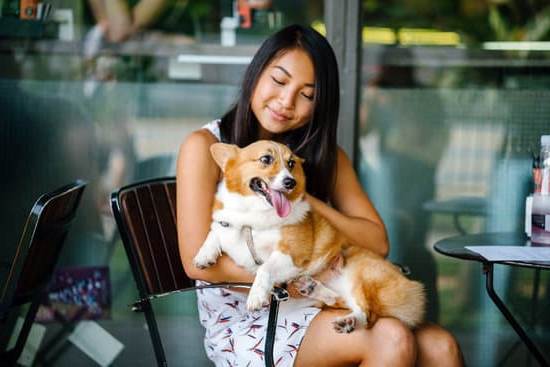When it comes to training your dog, one of the most important aspects to address is territorial behavior. Whether it’s growling at strangers, barking excessively when someone approaches, or marking their territory indoors, territorial behavior can be problematic and even dangerous if not handled properly. In this article, we will explore various techniques and strategies to train your dog to not be territorial.
Territorial behavior in dogs is instinctual and often stems from a need to protect their resources and establish boundaries. While some level of territorial behavior is normal, excessive or aggressive displays can lead to conflicts with other animals or humans. Understanding why dogs exhibit this behavior is crucial in effectively addressing the issue.
It is important for dog owners to recognize the signs of territorial behavior early on. This includes intense barking or lunging at strangers approaching the house or yard, aggressively guarding food or toys, and urinating in specific areas around the home. By identifying these behaviors as signs of territoriality rather than mere obedience issues, you can begin working on appropriate training methods to modify your dog’s behavior.
In the following sections, we will delve deeper into understanding the importance of addressing territorial behavior in dogs and discuss common signs of such behaviors. We will also explore creating a safe environment for your furry friend and introduce positive reinforcement training techniques that can help overcome territorial tendencies.
Additionally, we will provide tips on socializing your dog and ways to introduce them to new people and animals in order to reduce their territorial behaviors. Finally, we will touch upon managing territorial behavior in different contexts and highlight when seeking professional help may be necessary for severe cases.
By starting with an understanding of why dogs exhibit territorial behavior and recognizing the signs early on, dog owners can take proactive steps towards training their furry friends to be less aggressive or protective. With patience, consistency, and proper guidance from professionals if needed, it is possible to create a safe environment where your dog feels secure and not territorial.
The importance of addressing territorial behavior in dogs
Territorial behavior in dogs can not only be challenging for owners, but it can also potentially lead to aggressive incidents and other unwanted behaviors. Therefore, it is crucial to address and manage this behavior as soon as possible. By understanding the importance of addressing territorial behavior in dogs, owners can take proactive steps to create a safer environment for both their pet and others.
One of the main reasons why it is important to address territorial behavior in dogs is because it can escalate quickly and become a serious problem. Dogs that display territorial behavior may become aggressive towards people, other animals, or even objects that they perceive as threats to their territory.
This can pose a danger to visitors, neighbors, or other pets that come into contact with the dog. Additionally, if left unaddressed, the dog may develop even more intense feelings of fear or aggression over time.
Another reason why addressing territorial behavior is crucial is that it helps ensure the overall well-being of the dog. Territorial animals tend to experience heightened stress levels when they feel threatened by perceived intruders or unfamiliar experiences. This constant state of alertness can negatively impact their mental health and contribute to issues such as anxiety or even depression. By addressing and managing territorial behavior, owners can help their dogs feel more secure and relaxed in their environment.
Lastly, addressing territorial behavior is essential for maintaining harmonious relationships between pets and their owners. When a dog displays territorially motivated aggression towards family members or friends, it creates tension within the household and strains human-canine bonds. By actively working on modifying this behavior through training techniques and socialization methods, owners can rebuild trust with their dogs and establish better communication channels.
In summary, addressing territorial behavior in dogs is of utmost importance due to its potential escalation into aggression or other unwanted behaviors. By managing this behavior early on, owners can create a safer environment for everyone involved while ensuring the overall well-being of their canine companion.
Common signs of territorial behavior in dogs
Territorial behavior in dogs is a natural instinct that stems from their ancestors’ need to protect their resources and space. Understanding the common signs of territorial behavior in dogs is crucial for dog owners to address this behavior effectively. By recognizing these signs, owners can take the necessary steps to train their dogs and reduce territorial behavior.
- Growling and barking: One of the most obvious signs of territorial behavior in dogs is excessive growling and barking when someone approaches their territory. This can occur both inside and outside the home. It is important to intervene when a dog displays aggressive vocalizations, as it can escalate into more dangerous behaviors if left unchecked.
- Urine marking: Dogs with territorial behavior may engage in urine marking as a way to establish their boundaries or claim their territory. This is particularly common among male dogs but can also occur in females. If your dog frequently marks its territory indoors or on objects outside, it may indicate territorial behavior.
- Lunging or charging: Dogs with territorial tendencies may exhibit aggressive behaviors such as lunging or charging towards perceived intruders. This can be especially concerning if it happens during walks or encounters with other animals. It’s essential for owners to address this behavior to ensure the safety of both their dog and others.
To address territorial behavior, positive reinforcement training techniques are highly effective. Rewarding your dog for calm and non-aggressive behaviors can help modify its response to perceived threats. Additionally, socializing your dog from an early age can help them feel more secure and confident in various situations, reducing their territorial instincts.
Overall, by understanding these common signs of territorial behavior, dog owners can develop appropriate strategies to train their dogs effectively. Consistency, patience, and positive reinforcement will go a long way in helping your dog overcome its territorial tendencies and become a well-adjusted member of your family.
Creating a safe and secure environment for your dog
- Provide a designated space: Dogs thrive when they have their own space within the home where they can retreat to when feeling overwhelmed or anxious. Set up a comfortable area with a bed, toys, and access to water where your dog can relax and feel safe.
- Establish boundaries: Clearly define boundaries within your home to help your dog understand their territory. Use baby gates or other physical barriers if needed, especially in areas where conflicts may arise (e.g., near food bowls or favorite toys).
- Lock windows and doors: Secure windows and doors to prevent intrusions that may trigger territorial behavior in your dog. This will also help keep your dog from escaping and potentially getting into altercations outside.
- Manage triggers: Identify the triggers that cause your dog’s territorial behavior and take steps to manage or prevent exposure to them. If your dog becomes reactive around certain people or animals, limit their interactions until you can address the behavior through training.
It is important to note that creating a safe and secure environment is just the first step in addressing territorial behavior in dogs. While it can help alleviate some of the triggers, positive reinforcement training techniques, socialization, and introducing your dog to new people and animals are also necessary parts of the process.
| Tips for Creating a Safe Environment for Your Dog |
|---|
| 1. Provide a designated space |
| 2. Establish boundaries |
| 3. Lock windows and doors |
| 4. Manage triggers |
Positive reinforcement training techniques for overcoming territorial behavior
Territorial behavior in dogs can be challenging to overcome, but with consistent training and positive reinforcement techniques, it is possible to help your dog overcome this behavior. Positive reinforcement is a powerful tool that rewards desired behaviors and helps redirect your dog’s attention away from territorial tendencies. Here are some effective positive reinforcement training techniques to help address territorial behavior in dogs:
- Counterconditioning: This technique involves changing the emotional response your dog has towards specific triggers that trigger territorial behavior. For example, if your dog becomes possessive of their food or toys, you can gradually associate those triggers with something positive by rewarding them with treats or praise when they display calm behavior around these triggers.
- Desensitization: This technique involves gradually exposing your dog to the triggers of their territorial behavior in a controlled manner, starting with lower intensity situations and slowly increasing the stimulus over time. For instance, if your dog gets aggressive when people approach your front door, you can start by having a friend stand farther away from the door and reward your dog for remaining calm.
Gradually decrease the distance between the person and the door while continuing to reward calm behavior. - Distraction and redirection: When you notice signs of territorial behavior in your dog, it’s important to redirect their attention to more appropriate activities or behaviors. Provide them with interactive toys or engage them in training exercises that focus on obedience commands like “sit” or “stay.” By redirecting their focus onto positive behaviors, you can help them disassociate from territorial tendencies.
Remember that consistency and patience are key when using positive reinforcement techniques. It is important not to punish or scold your dog for their territorial behavior as this may worsen the problem or create anxiety in your pet. Instead, focus on rewarding and praising calm and non-territorial behaviors consistently.
Additionally, it can be helpful to consult with a professional dog trainer or behaviorist who specializes in positive reinforcement techniques. They can provide guidance and tailored strategies to address your dog’s specific territorial behavior. With time, patience, and the right training approach, you can support your dog in overcoming their territorial behavior and create a safe and harmonious environment for both your pet and your family.
Socialization tips to help your dog feel more secure and less territorial
Socialization plays a crucial role in helping dogs feel more secure and less territorial. By exposing your dog to different people, animals, and environments at a young age, you can help them become more comfortable and confident in various situations. Here are some socialization tips to help your dog feel more secure and less territorial.
Start Early
The key to successful socialization is to start early. Puppies are most receptive to new experiences between the ages of 3 and 14 weeks. During this critical period, expose your puppy to as many positive experiences as possible. Take them to different places, introduce them to a variety of people and animals, and expose them to new sounds and sights. This will help them develop positive associations with unfamiliar things, reducing their tendency towards territorial behavior later on.
Positive Experiences
When introducing your dog to new people or animals, ensure that the experience is positive for them. Use treats or toys as rewards for calm behavior and encourage gentle interactions. Gradually increase the difficulty of the interactions as your dog becomes more comfortable. For example, start with short introductions and slowly lengthen the duration of the interactions.
Puppy Classes
Enrolling your dog in puppy classes is an excellent way to enhance their socialization skills. These classes provide controlled environments where puppies can interact with other dogs under professional supervision. In addition to learning basic obedience commands, puppies will have opportunities for positive social interactions that will help reduce their territorial tendencies.
Expose Them Gradually
When introducing your dog to new environments or situations, it’s important not to overwhelm them. Gradually expose them by starting with less crowded areas or quieter surroundings before progressing to busier places with more stimuli. This gradual exposure will allow your dog to build confidence without feeling overwhelmed or threatened.
Remember that every dog is unique, so patience and consistency are key. If your dog exhibits severe territorial behavior that you are unable to manage on your own, don’t hesitate to seek professional help from a certified dog trainer or animal behaviorist. They can assess your dog’s specific needs and provide tailored guidance to address their territorial behavior effectively.
Introducing your dog to new people and animals to reduce territorial behavior
Introducing your dog to new people and animals is an essential step in reducing territorial behavior. By gradually exposing your dog to unfamiliar individuals and pets, you can help them feel more comfortable and less inclined to behave aggressively or defensively in such situations. Here are some tips on how to introduce your dog to new people and animals effectively:
Slow and gradual introductions
When introducing your dog to new people or animals, it’s important to take things slow and proceed at a pace that is comfortable for your furry friend. Start by allowing them to observe the other person or animal from a safe distance, such as on opposite sides of a room or across a fence. Gradually decrease the distance over time while closely monitoring their reactions.
Use positive reinforcement
Positive reinforcement is a powerful tool when it comes to training dogs. Rewarding your dog with praise, treats, or toys for calm and non-aggressive behavior during introductions can help reinforce good manners and positive associations with new faces or furry friends. This will ultimately help in reducing territorial behavior.
Supervise interactions
Always supervise interactions between your dog and new people or animals, especially during the initial stages of introduction. Keep a close eye on their body language, watching for signs of discomfort or tension. If any signs of aggression arise, separate them immediately and reassess how to proceed with introductions.
Gradually increase exposure
Once your dog begins showing comfort and relaxation around new people or animals, gradually increase the duration of their interactions. This may involve allowing them longer periods of supervised playtime together or arranging more frequent meet-ups with friends’ dogs or family members.
Remember that every dog is unique, so what works for one may not work for another in terms of reducing territorial behavior. Be patient and understanding throughout the process as it may take time for your dog to adjust. If you encounter difficulties or concerns, it is always advisable to seek professional help from a qualified dog trainer or behaviorist who can provide personalized guidance and solutions tailored to your dog’s specific needs.
Managing territorial behavior in different contexts (e.g. home, walks, car rides)
Managing territorial behavior in different contexts, such as at home, during walks, or car rides, is essential for ensuring the overall well-being of your dog and maintaining a harmonious environment. Each setting may trigger different levels of territorial behavior in dogs, and it is crucial to address these issues consistently to help your dog feel safe and secure.
When it comes to managing territorial behavior within the home, establishing clear boundaries and rules is key. Begin by designating specific spaces for your dog where they can relax and feel comfortable. Use baby gates or barriers to block off areas that you want to keep off-limits to them.
Additionally, provide your dog with their own personal space or crate where they can retreat when they need some alone time. This will give them a sense of security while also teaching them appropriate behaviors within the home.
During walks, territorial behavior may manifest as aggressive reactions towards other dogs or individuals passing by. To manage this behavior, start by keeping your dog on a short leash and maintaining control during encounters with others. Gradually expose your dog to controlled socialization situations, such as walking with a calm and friendly dog on neutral territory. Reward positive interactions with treats or praise to reinforce good behavior.
Car rides may also trigger territorial behavior in dogs due to the perceived invasion of their personal space. To manage this behavior, begin by acclimating your dog to car rides gradually. Start with short trips around the block while providing treats and praise for calm behavior. Increase the duration of car rides over time while continuing to reward positive responses. If necessary, use pet carriers or seat belts specifically designed for dogs to ensure their safety during car rides.
Consistency is key when managing territorial behavior in different contexts. By addressing these issues using positive reinforcement techniques consistently across all settings, you can help your dog feel more secure and less prone to display territorial behaviors.
Seeking professional help for severe cases of territorial behavior in dogs
While many cases of territorial behavior can be addressed and managed with proper training and socialization, there are some instances where seeking professional help is necessary. If your dog’s territorial behavior is severe or poses a risk to their own safety or the safety of others, it is important to consult with a professional dog trainer or animal behaviorist.
Professional trainers have the knowledge and experience to assess your dog’s specific situation and develop a customized training plan to address their territorial behavior. They can provide guidance on techniques and exercises that are appropriate for your dog’s breed, age, and individual needs. Additionally, they can offer support and feedback throughout the training process, ensuring that you are equipped with the necessary tools to effectively modify your dog’s behavior.
An animal behaviorist may also be consulted for more complex cases of territorial behavior. These professionals specialize in understanding the root causes of behavioral issues in animals and can provide valuable insights into why your dog may be exhibiting territorial tendencies. They may recommend additional interventions such as medication or specific therapies tailored to address any underlying anxiety or fear that could be contributing to the territorial behavior.
Remember, seeking professional help does not mean you have failed as a pet owner. It shows that you are committed to providing the best possible care for your dog and ensuring their well-being. With guidance from a professional, you can learn how to effectively manage and modify your dog’s territorial behavior, creating a safer and more harmonious environment for everyone involved.
Frequently Asked Questions
Why is my dog getting so territorial?
Dogs can become territorial for a variety of reasons. One common cause is the instinctual need to protect their resources, including their territory and possessions. This behavior can be particularly pronounced in certain breeds or individual dogs with a strong guarding instinct.
Other factors that may contribute to territorial behavior include fear or anxiety, lack of proper socialization, past traumatic experiences, or even learned behavior from other dogs. It’s important to understand the underlying cause for your dog’s territoriality in order to effectively address and modify their behavior.
How do I stop my dog from being territorial with my other dog?
To stop your dog from being territorial with your other dog, it’s crucial to establish clear boundaries and reinforce positive behaviors consistently. Begin by providing separate food bowls, toys, and sleeping areas for each dog to minimize potential conflicts over resources. Gradually introduce controlled interactions between them while closely monitoring their body language and behavior.
If any signs of aggression or dominance arise, interrupt the interaction calmly and redirect their attention to an alternative activity like playing with toys separately. Reward desired behaviors such as sharing or being relaxed around each other with treats and praise. Consider seeking professional guidance from a certified dog trainer or animal behaviorist who can provide personalized advice based on your specific situation.
How do you fix possessive aggression in dogs?
Fixing possessive aggression in dogs requires patience, consistency, and a well-structured training plan. Start by identifying the specific triggers that elicit possessive behaviors in your dog – whether it’s certain objects, food, toys, or space – so you can avoid situations that might escalate their aggression initially. Focus on building trust and reinforcing positive behaviors through reward-based training methods such as clicker training or treat rewards when your dog displays calm and non-possessive behavior around those triggers.
Encourage sharing by teaching the “drop it” command or by introducing structured exercises where they have access to desirable items but must learn to relinquish them on cue without displaying aggression. Avoid punishments or negative reinforcement techniques as these can worsen possessive behavior. It’s vital to consult with a professional dog trainer or animal behaviorist who can assess your dog’s specific needs and help develop a comprehensive behavior modification plan tailored to their individual temperament and circumstances.

Welcome to the blog! I am a professional dog trainer and have been working with dogs for many years. In this blog, I will be discussing various topics related to dog training, including tips, tricks, and advice. I hope you find this information helpful and informative. Thanks for reading!





